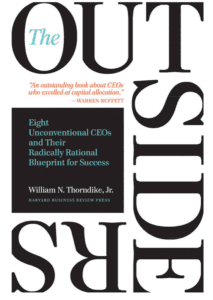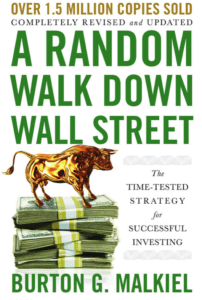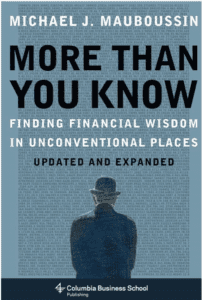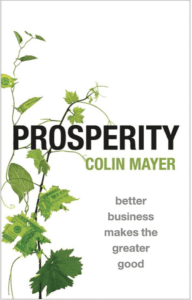
In a curated list of must-read investment books for summer, Rebalance Investment Committee member Burt Malkiel’s A Random Walk on Wall Street is a stand-out choice. Now in its twelfth edition, A Random Walk provides timeless wisdom and makes the perfect poolside companion for the reader serious about their finances.
It’s summer vacation and time to catch up on that…investment reading?
Well, for some people, that’s the perfect way to spend a day at the beach. So we asked fund experts for their tips, and received a mix of recommendations, including books on investing, Wall Street history and bitcoin.
Here are edited comments from the pros on their top picks.
SEAN GAVIN, portfolio manager, Fidelity Investments
“The Outsiders: Eight Unconventional CEOs and Their Radically Rational Blueprint for Success,” by William N. Thorndike (Harvard Business Review Press, 2012)
 “A thoughtful look at the strategies of eight CEOs who created significant shareholder value. Thorndike distills the characteristics of these CEOs into the ‘outsider’s checklist,’ which can help businesses and investors adopt the right approach to take their game to the next level.”
“A thoughtful look at the strategies of eight CEOs who created significant shareholder value. Thorndike distills the characteristics of these CEOs into the ‘outsider’s checklist,’ which can help businesses and investors adopt the right approach to take their game to the next level.”
“The Little Book of Behavioral Investing: How Not to Be Your Own Worst Enemy,” by James Montier (John Wiley & Sons, 2010)
“This is a wonderfully distilled book on many of the common behavioral pitfalls of investing, such as overconfidence and information overload. I point all new investors toward this book when they first experience the market’s ups and downs.”
GEMMA WRIGHT-CASPARIUS, senior portfolio manager, Vanguard’s fixed-income group
“Us vs. Them: The Failure of Globalism,” by Ian Bremmer (Portfolio, 2018)
“This offers a fascinating analysis of globalization’s shortcomings and unfulfilled promises, while highlighting the potential impacts that an unraveling of globalization could have on the economy and markets.”
“A Random Walk Down Wall Street,” by Burton G. Malkiel (W.W. Norton & Co., 1973)

“Malkiel’s book considers how investors can develop and refine their risk profile to allocate their investments accordingly, while managing their portfolio to meet their personal objectives. It also provides a helpful reminder on how to think about risk versus reward, and the importance of diversifying portfolios over the long term.”
MICHAEL ARONE, chief investment strategist for the SPDR Americas business at State Street Global Advisors
“Predictably Irrational: The Hidden Forces That Shape Our Decisions,” by Dan Ariely (HarperCollins, 2008)
“A great exploration of how people actually behave versus how economic models tell us they should behave. If you are seeking a better understanding of why we do the silly things we do, read this book.”
“More Than You Know: Finding Financial Wisdom in Unconventional Places,” by Michael Mauboussin (Columbia University Press, 2006)
 “Today’s markets are dominated by a handful of widely held narratives, not underlying fundamentals, with extraordinary monetary policies and curiously timed fiscal stimulus, making it difficult for investors to determine where we are in the long-running economic expansion. This book stresses the importance of using a multidisciplinary framework to solve today’s investment challenges, combining elements of investment philosophy, human decision-making and science (such as physics), along with psychology and complexity theory.”
“Today’s markets are dominated by a handful of widely held narratives, not underlying fundamentals, with extraordinary monetary policies and curiously timed fiscal stimulus, making it difficult for investors to determine where we are in the long-running economic expansion. This book stresses the importance of using a multidisciplinary framework to solve today’s investment challenges, combining elements of investment philosophy, human decision-making and science (such as physics), along with psychology and complexity theory.”
DAN DRAPER, managing director and global head of Invesco ETFs and unit investment trusts
“Prosperity: Better Business Makes the Greater Good,” by Colin Mayer (Oxford University Press, 2018)
 “This begins with the history of the corporation and brings in business, law, economics, science, philosophy and history to suggest how the modern corporation can realize its full potential to help wider society, as well as shareholders.”
“This begins with the history of the corporation and brings in business, law, economics, science, philosophy and history to suggest how the modern corporation can realize its full potential to help wider society, as well as shareholders.”
“The Bitcoin Standard: The Decentralized Alternative to Central Banking,” by Saifedean Ammous (John Wiley & Sons, 2018)
“With a strong libertarian voice, this provides a good overview of cryptocurrencies and their potential to change our global economy and our lives in the future.”
FORD O’NEIL, portfolio manager, Fidelity Investments
“The Boys in the Boat: Nine Americans and Their Epic Quest for Gold at the 1936 Berlin Olympics,” by Daniel James Brown (Viking, 2013)
“This tale of the U.S. medal-winning rowing crew showcases the benefits of assembling a team from disparate backgrounds. Diverse experiences combine with discipline and collaboration to show that the whole can be greater than the sum of the parts,” so investors should look for businesses that have built diverse teams.
“Liar’s Poker,” by Michael Lewis (W.W. Norton & Co., 1989)
“Lewis’s book famously describes a culture that was prevalent in parts of Wall Street in the 1980s. A short-term focus, sometimes-blind pursuit of profits and an environment of constant stress and pressure are a cautionary tale of how not to do business.”
“Devil Take the Hindmost: A History of Financial Speculation,” by Edward Chancellor (Farrar, Straus & Giroux, 1999)
“This analysis of how economics and psychology affect markets shows how sound investments can become speculative as prices rise and valuations increase. The next time you hear someone say, ‘This time is different,’ read this book.”
JASON CELENTE, senior portfolio manager, Insight Investment
“Risk Less and Prosper: Your Guide to Safer Investing,” by Zvi Bodie and Rachelle Taqqu (John Wiley & Sons, 2011)
“This is relevant for investors as they enter the ‘deaccumulation’ phase of their lifetimes, often in retirement. The authors break future spending into two categories—wants and needs—and provide a framework to plan for both.”
JEREMY SCHWARTZ, global head of research, WisdomTree
“Modern Monopolies: What It Takes to Dominate the 21st Century Economy,” by Alex Moazed and Nicholas L. Johnson (St. Martin’s Press, 2016)
“Platform-based business models like Airbnb or eBay are transforming how business is conducted and have far-reaching implications across different industries, not just technology. This book shows how they are revolutionary models that all traditional enterprises should explore and invest in.”






